Last Updated on August 19, 2023 by Robert Price
The Norwood scale is cited thousands of times per day.
Guys on the hair loss forums are obsessed with it.
Dermatologists and surgeons regularly discuss the scale too.
Some men even talk about their Norwood statuses with their therapists (yep, including me).
So it’s an extremely useful scale.
Originally devised by dermatologist James Hamilton in the 50s and later revised by O’Tar Norwood in 1975, we now simply refer to it as the Norwood scale. It covers most types of balding and is fairly easy to interpret.
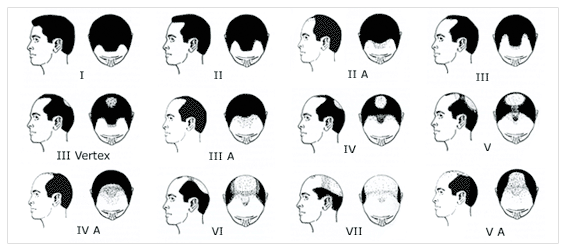
Type II A is generally regarded as the first class of “balding.”
That said, the Norwood scale is a good but imperfect means to diagnose hair loss.
Here are a few common(and no so common) hair loss patterns NOT listed on the Norwood scale.
1. DPA – Diffuse Patterned Alopecia
Diffuse thinning is a common variety of hair loss. In diffuse patterned alopecia, men experience thinning throughout their scalps, often in all areas except for the permanent horseshoe-like band along the sides and back.

Larry David’s permanent zone — the horseshoe band — is still intact and as thick as ever.
Diffuse patterned alopecia is typically an aggressive variety of hair loss. Men who experience DPA often become bald eventually, and when their thinning ceases, have either Norwood 6 or 7 patterns.
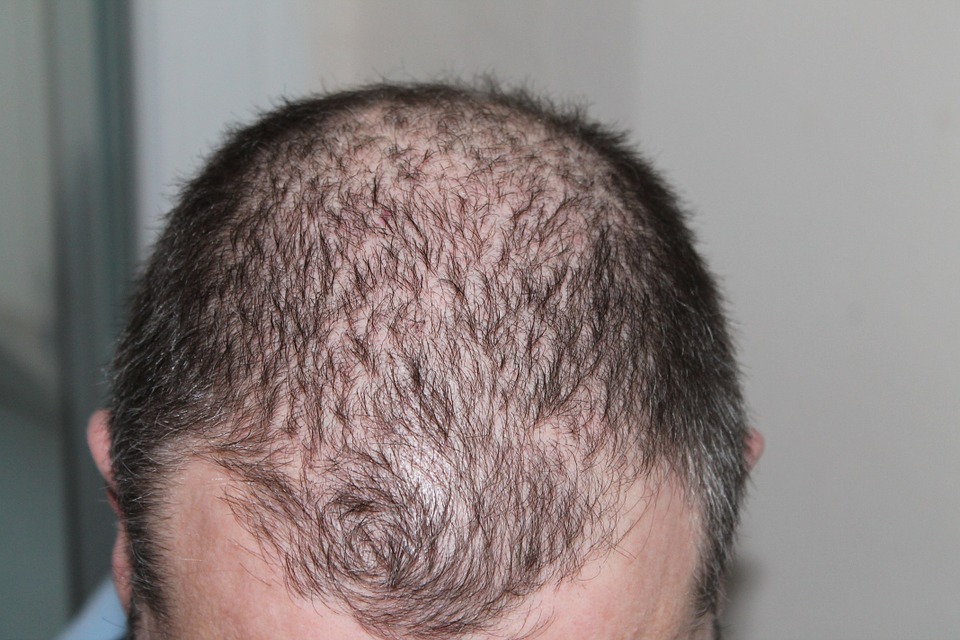
This is a good example of diffuse patterned alopecia. You can see this young man has extensive thinning, but his hairline is mostly intact. He is showing an early Norwood 6 pattern in this photo.
2. DUPA – Diffuse Unpatterned Alopecia
DUPA isn’t common, granted. It’s quite rare and often misdiagnosed as regular male pattern baldness. Diffuse unpatterned alopecia indicates thinning in all areas of the scalp, including in the permanent zone, which I showed you in the above Larry David photo.
Men with DUPA seldom make good hair transplant candidates, because the “permanent” zone, AKA the donor zone, is where hair is typically harvested for transplantation.
In most cases, DUPA patients eventually have tiny, see-through, horseshoe-like bands on the back and sides of their heads. It’s a condition that can be treated, to some degree, with medications like Propecia.
3. Norwood 2V – The Al Gore Pattern
This Norwood 2V pattern is relatively common.
It’s a mature hairline with a bald spot, essentially.
Al Gore famously had this pattern for years, and right now, a good example can be found on the head of the filmmaker Kevin Smith. Businessman and philanthropist Bill Gates also appears to show this pattern now, after many years of having no significant hair loss to speak of.
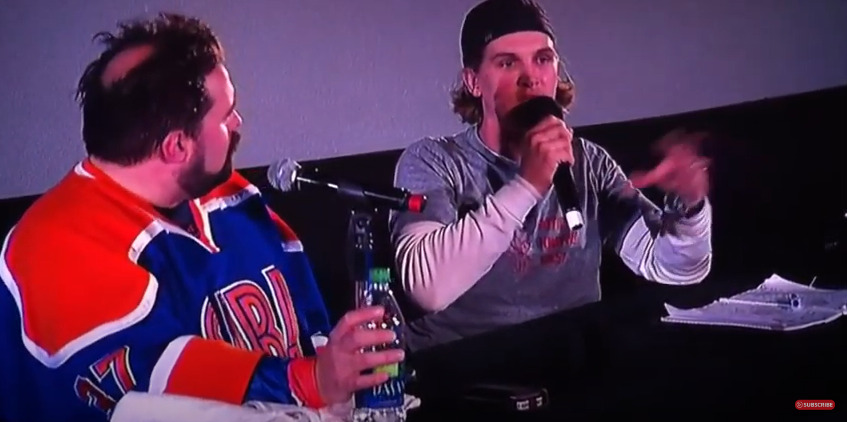
Director Kevin Smith (left). Notice how he has no significant recession at the hairline but a substantial bald spot on his crown.
Conclusion – Three Patterns of Hair Loss that Are Not on the Norwood Scale
The Norwood scale, originally devised by dermatologist James Hamilton and later revised by O’Tar Norwood, remains an essential tool for diagnosing hair loss.
However, it’s important to recognize that the Norwood scale is not without its limitations. Several hair loss patterns, such as diffuse patterned alopecia (DPA) and diffuse unpatterned alopecia (DUPA), are not included in the scale.
So, while the Norwood scale has its place, let’s not forget the hair loss patterns that dance outside its lines.
Have you observed any other hair loss patterns that aren’t included on Norwood’s scale?
Leave me a comment and we’ll compare notes.
Robert Price is a writer, consumer advocate, and hair loss researcher with thousands of hours of experience in the field. His goal is to keep you out of the hair loss rabbit hole, underworld, or whatever you want to call it. He founded Hair Loss Daily, the unbiased hair loss blog, in 2016. You can learn more about Robert in the my story section of this website.
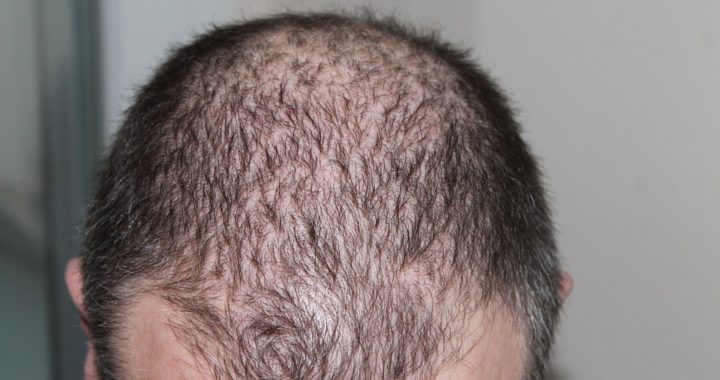
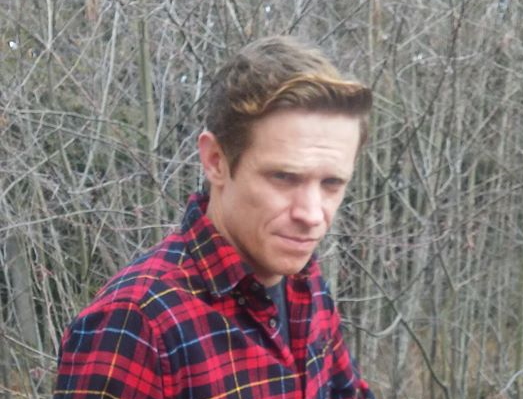
My male pattern baldness was about as ‘standard’ and typical as you can get, except that it happened so fast once it got started, which pleased me immensely. First came the rapid receding at my temples (I already had a ‘mature’ hairline) followed by rapid narrowing of my ‘widows peak’, then a bald spot appeared in back and quickly expanded and spread forward to soon meet my retreating hairline from the front. It happened so fast (less than two years) I was shocked and at the same time extremely delighted. It was a wonderful feeling to watch my transition from an almost full head of hair to Norwood 6 bald. After all my hair in front was gone, my bald spot in back kept moving forward until all that was left was a narrow ‘bridge’ of stubborn hair across the top of my head. Then that hair rapidly thinned out until all that remained was almost invisible short fuzzy hair: vellus hair. Even that ‘fuzz’ is almost gone now and I run a razor across it a couple times a month to keep the top of my head slick, smooth and shiny. I’m hoping to eventually bald a bit more to Norwood 7, with absolutely no sign of any of that vellus hair.